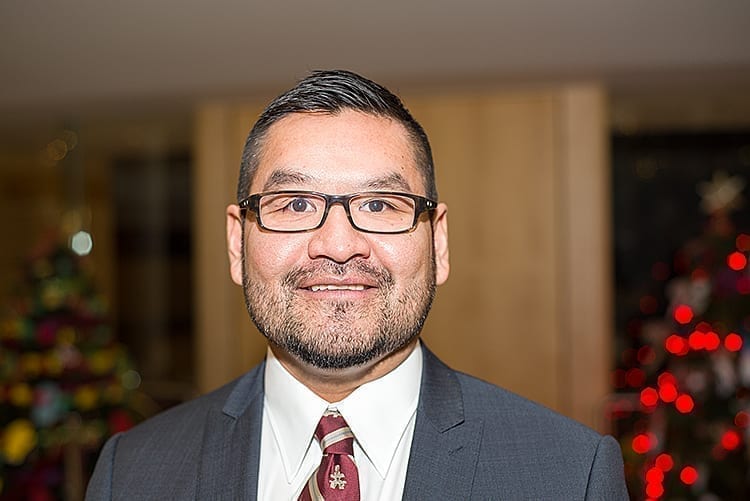The heat is on in Fort Simpson public housing units.
The Northwest Territories Housing Corporation (NWTHC) issued a news release Aug. 1 stating that it is determined to take on bed bug challenges in Fort Simpson public housing units with a four-to five-hour heat treatment process without the need to re-house tenants.
The Fort Simpson Housing Authority (FSHA) held an emergency meeting in June and followed up with tenant meetings in early July which local community leaders and senior health and social services bureaucrats from the Dehcho attended.
Several emails obtained by News/North indicate that it was understood in the community that bed bug treatment in the public housing units - particularly in the nine-plex and Stanley Isaiah clusters - would require tenants to be moved out for several days. Some of those tenants include Indigenous elders and/or individuals suffering from social issues such as addictions, unemployment, and "serious medical issues," such as physical disabilities and cancer, according to documents. Some of those medical conditions may prevent people from being transferred elsewhere, especially without their consent and/or added health services, according to emails.

Despite this situation, the NWTHC maintained last week that treatment will require a four-to five-hour heat treatment process of units with no need to relocate tenants. There was also no indication for the need for chemical treatment.
“The Authority is taking immediate action to treat these units as they have the equipment and training,” the news release stated. “The treatment process takes four hours and the affected residents will not need to be re-housed due to bed bugs.
"Bed bugs have been an issue in some communities in the NWT for many years and best practices for eradicating them are well established."
The corporation also states in the news release that "at least six units are showing signs of bed bugs, of which the tenants were unaware" following door-to-door inspections by maintenance staff from the local housing authority.
Erin Shea, manager of homelessness and community planning with NWTHC stated in an email Friday that both an administrator and the local housing organization foreman went door-to-door on July 29 at the nine-plex and the 20 units in the Stanley Isaiah Seniors Home.
Two GNWT ministers provided quotes in the news release with Alfred Moses, Minister Responsible for the Northwest Territories Housing Corporation stating that training and equipment have proven the local housing organizations successful in dealing with bed bugs.
“Our local housing organizations have been successful in treating bed bugs in public housing through their training and having the appropriate equipment,” Moses stated.
As News/North reported last week, the local housing authority board was removed by the NWTHC and replaced by a single bureaucrat due to "inefficiencies" the corporation said were discovered in the annual spring auditing process. It may take six months to a year for a new board to be put in place, according to an interview with Tom Williams, CEO and president of the NWTHC last week.
"The Minister indicated that an administrator has been appointed to bring the Authority's operations back to an acceptable standard, after which, a new manager will be appointed and a full board appointed," the news release stated, without indicating what the acceptable standard might be.
The news release states that Moses has been in touch with "community leadership in Fort Simpson" to discuss housing corporation operations and to answer questions about bed bugs in the village.
Glen Abernethy, Minister of Health and Social Services also provided a quote in the news release and pointed to the challenges of bed bugs in housing units. He stated that his department will support the housing corporation in its efforts. The release indicates that this includes holding "a workshop in Fort Simpson for technical staff from local organizations in other communities" in August to provide training for bed bug eradication. The department is also providing public health information about the insect.

“Eliminating bed bugs can be challenging if the infestation is extensive or involves complex building structures,” Abernethy stated. “The Environmental Health Unit from the Department of Health and Social Services will continue to provide advice to the NWT Housing Corporation to support them in addressing this problem.”
In an email to News/North on July 26, the Department of Health and Social Services stated that the "Environmental Health Unit hasn't received any complaints regarding bed bugs in the Fort Simpson area.
"The Environmental Health Unit can provide general advice should someone contact the Unit, but actions to eradicate pests are the responsibility of the building owner," the email stated.
"Additionally the Northwest Territories Housing Corporation confirms that: 'Currently no public housing units in Fort Simpson that have bedbugs.'"
A former employee responds
A former employee with the Fort Simpson Housing Authority, who has asked to remain anonymous, said Thursday's announcement remains consistent with the NWTHC's treatment in the recent past, but that a new approach needs to be taken. According to the source, the corporation should be following the example of the Inuvik Emergency Shelter, which suffered a serious bedbug infestation in 2018 and required moving 16 tenants to a temporary location.
The Inuvik incident also included investment in fumigation, and installing new flooring, furniture and linens.